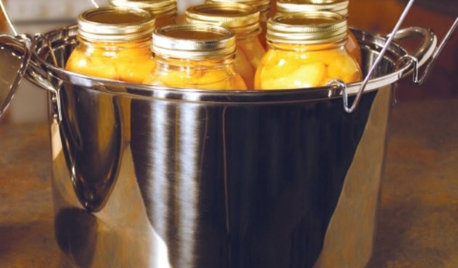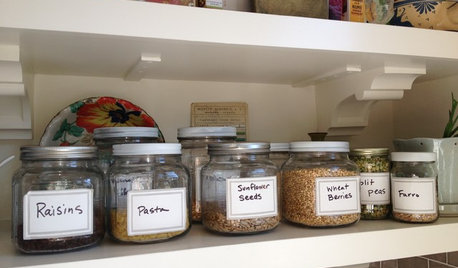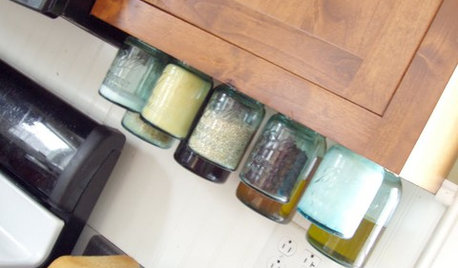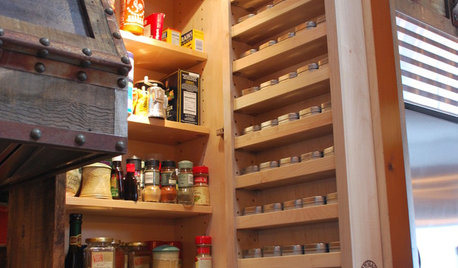Canning dried beans and posole
thelawoffives
15 years ago
Related Stories

PRODUCT PICKSGuest Picks: Canning, Preserving, Steaming, Dehydrating
20 products to help make fall produce last through the season and beyond
Full Story
SUMMER FRUITS AND VEGETABLESSummer Crops: How to Grow Beans
Grow your own beans for amazing variety and healthy, convenient produce all summer
Full Story
KITCHEN STORAGEArtful Organizers: Jars for Pretty Pantry Displays
Ditch the disheveled look of mismatched boxes and bags for colorful or clear pantry jars in an appealing arrangement
Full Story
LIFESlow Living 101: Tips for Turning Off the Chaos
It may feel as though you're too busy to slow down and enjoy life. But even little changes can have a big effect
Full Story
KITCHEN DESIGNGet Organized: Easy DIY Mason Jar Storage
Create a clever under-cabinet pantry system with pretty vintage jars
Full Story
FEEL-GOOD HOMESimple Pleasures: Make Do and Mend
Experience the satisfaction of fixing, repurposing and creating things yourself around the home
Full Story
KITCHEN DESIGN7 Steps to Pantry Perfection
Learn from one homeowner’s plan to reorganize her pantry for real life
Full Story
MONTHLY HOME CHECKLISTSSeptember Checklist for a Smooth-Running Home
Get ready to get cozy at home with snuggly blankets, well-stocked firewood, added insulation and more
Full Story
DECLUTTERINGFoolproof Ways to Declutter Your Kitchen
If you find yourself fumbling through cupboards to find what you’re looking for, it’s time to take action with these simple steps
Full Story
KITCHEN DESIGN12 Items Worth a Spot on Your Kitchen Counter
Keep these useful tools and accessories out in the open to maintain high function without spoiling the view
Full StoryMore Discussions






digdirt2
thelawoffivesOriginal Author
Related Professionals
Londonderry Landscape Architects & Landscape Designers · Allentown Landscape Architects & Landscape Designers · Glen Ellyn Landscape Architects & Landscape Designers · Leawood Landscape Architects & Landscape Designers · Piqua Landscape Architects & Landscape Designers · Quincy Landscape Architects & Landscape Designers · Springfield Landscape Contractors · Arlington Landscape Contractors · Brookline Landscape Contractors · Eagle Landscape Contractors · Old Saybrook Landscape Contractors · Four Corners Landscape Contractors · Vadnais Heights Landscape Contractors · Boise Roofing & Gutters · Fremont Driveway Installation & Maintenancereadinglady
thelawoffivesOriginal Author
readinglady
VBushon